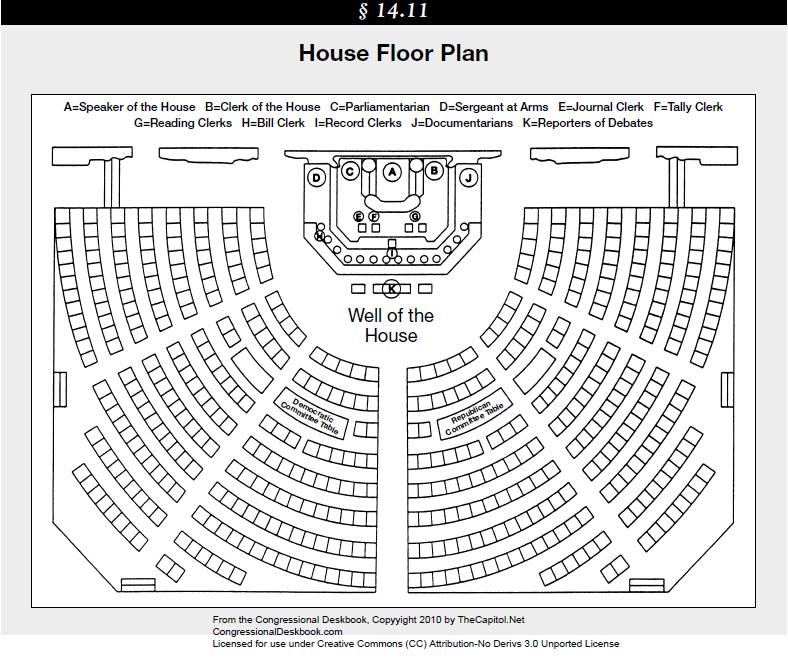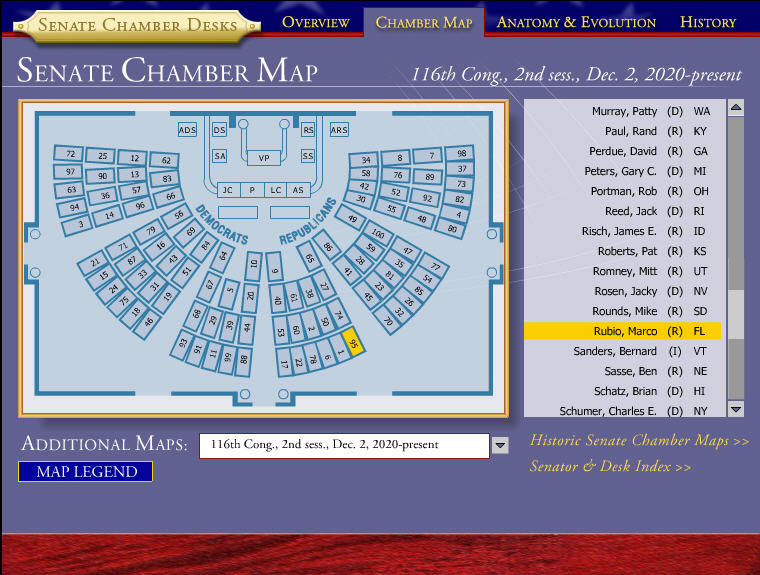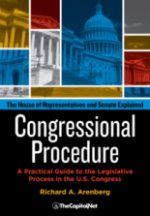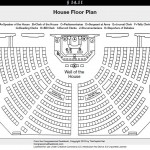Congress Seating Charts
Also see
|
House of Representatives Floor Plan

Unlike the Members of the Senate, Members of the House have no assigned seats but are by tradition divided by party; Members of the Democratic Party sit to the Speaker’s right and Members of the Republican Party sit to the Speaker’s left.
“In addition to the representatives (and formerly pages), a variety of staff have permanent or temporary privileges to be on the floor of the House. Standing next to or near the presiding officer are the parliamentarian, sergeant at arms, and clerk of the House. At the desk immediately in front of the Speaker are seated the journal clerk, tally clerk, and reading clerk. At the desk below the clerks are the bill clerk, enrolling clerk, and daily digest clerk. Reporters of debate sit at a table below the rostrum. Staff members of committees and individual representatives are allowed on the floor by unanimous consent.”
From § 6.113, Who Is Allowed on the House Floor? in the Congressional Deskbook
Also see:
- “Guide to Individuals Seated on the House Dais,” CRS Report 98-396 (7-page PDF
 )
) - “No Assigned Seats” – The Honorable Beverly Barton Butcher Byron describes the seating arrangement on the House Floor.
Senate Seating Chart

The Senate Seating Chart on the Senate web site is here.
Seats are assigned in the Senate. Senators of the Democratic Party sit to the presiding officer’s right, and Senators of the Republican Party sit to the presiding officer’s left.
“In addition to senators, a variety of staff have permanent or temporary privileges to be on the floor of the Senate. At the desk immediately in front of the presiding officer are seated the parliamentarian, legislative clerk, journal clerk, and, often, the executive clerk and bill clerk. Reporters of debates sit at a table below the rostrum. Seats near the rostrum are reserved for the secretary and assistant secretary of the Senate and the sergeant at arms. Majority- and minority-party secretaries and other staff members who have floor privileges may be seen on the floor. Pages sit on either side of the presiding officer’s desk. Staff members of individual senators are allowed on the floor by unanimous consent.”
From § 6.192, Who Is Allowed on the Senate Floor? in the Congressional Deskbook
Also see:
- “Guide to Individuals Seated on the Senate Dais,” CRS Report 98-397 (6-page PDF
 )
) - “Senate Floor Privileges: History and Current Practice,” CRS Report R46257 (23-page PDF
 )
)
From CongressionalGlossary.com
- “The seven stages of the office seeker”
- Floor / Aisle / Candy Desk / Gallery (CongressionalGlossary.com)
- Speaker’s Lobby (CongressionalGlossary.com)
- Mace (CongressionalGlossary.com)
- Hopper (CongressionalGlossary.com)
- Parliamentarian (CongressionalGlossary.com)
- Presiding Officer (CongressionalGlossary.com)
- Secretary of the Senate (CongressionalGlossary.com)
More
- “Who Owns Congress? A Campaign Cash Seating Chart,” MotherJones, September/October 2010
- “The seven stages of the office seeker”
- Wealth of Congress – Roll Call
- “Who Owns Congress?” by Barry Ritholtz, December 19, 2013
Online Congressional Directories
Quick DC Links – Washington Essentials
URLs: CongressSeating.com
TCNSeating.com
Courses
- Congressional Operations Briefing – Capitol Hill Workshop
- Drafting Federal Legislation and Amendments
- Writing for Government and Business: Critical Thinking and Writing
- Custom Training
- Preparing and Delivering Congressional Testimony and Oral Presentations, Five-Course Capitol Learning Audio CD
Publications

Testifying Before Congress |

Pocket Constitution |

Citizen’s Handbook to Influencing Elected Officials: A Guide for Citizen Lobbyists and Grassroots Advocates |

Congressional Procedure |
CongressionalGlossary.com, from TheCapitol.Net
For more than 40 years, TheCapitol.Net and its predecessor, Congressional Quarterly Executive Conferences, have been teaching professionals from government, military, business, and NGOs about the dynamics and operations of the legislative and executive branches and how to work with them.
Our custom on-site and online training, publications, and audio courses include congressional operations, legislative and budget process, communication and advocacy, media and public relations, testifying before Congress, research skills, legislative drafting, critical thinking and writing, and more.
TheCapitol.Net is on the GSA Schedule, MAS, for custom on-site and online training. GSA Contract GS02F0192X
TheCapitol.Net is now owned by the Sunwater Institute.
Teaching how Washington and Congress work ™


